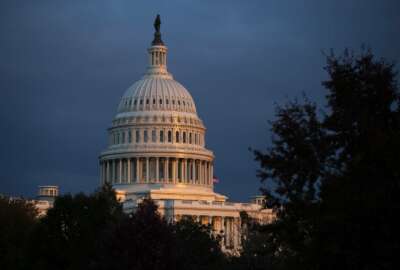
Another shutdown, another recession?
Could the next government shutdown end the record 10-year bull market and trigger another recession? It may not be long until we find out.
Could the next government shutdown end the record 10-year bull market and trigger another recession? It may not be long until we find out, like less than a month from now.
Congress and the White House reached an 11th-hour compromise Thursday which prevented a government shutdown that was set to begin at midnight, thanks to the last-minute continuing resolution. The not-so-good-news is that this must happen all over again next month when the new shutdown deadline is Dec. 20. Meaning it is possible — maybe not likely — that there will be a government shutdown over Christmas.
The issues are the same. Congress failed to do its basic job of appropriating funds, forcing a series of stopgap continuing resolutions to keep the government running. Depending on which source you prefer somewhere between 380,000 (Congressional Budget Office) and 692,900 (The New York Times) feds were furloughed without pay for 35 days. All sides agree it was a record. Many feds had nothing, no income, for weeks. And when the furlough ended Jan. 25 it was weeks before many got any back pay.
Agriculture employees were saved thanks to quick action by the payroll office. An employee says that, “Here at USDA … I recall my boss called an emergency phone-conference meeting as soon as the furlough was declared over, one I took at home before I even returned to work the day after the furlough was over. One of my duties is being a time-keeper. Just to set the record straight we were paid the very week we returned … that was the priority here at USDA. So USDA did act speedily on that issue.”
However many workers in other agencies had to wait weeks for their back pay.
This year as a precaution Congress is considering a bill. The Protecting Innocent Customers Affected by a Shutdown Act would protect the credit scores of feds during the next shutdown. Well-intentioned to be sure, but more of a Band-Aid where a tourniquet is needed. And would it protect contractors who, unlike civil servants who eventually got paid, had to eat the 35-day shutdown. Some have still not recovered financially.
The 35-day shutdown numbers vary all over the place, as numbers out of Washington often do. By some accounts the shutdown cost the economy $11 billion, with $3 billion a permanent write-off. Other experts double the amount. The CBO estimated it would slow economic growth to 2.3% instead of the projected 3.5%.
Normally the stock market undergoes a correction of 20% or more fairly often. But its been 10-plus years since such a dip, although the markets came close just before Christmas 2018. That time frame has many investors nervous. Many now expect a major correction or recession sometime in 2020, if not before.
The federal government is the largest employer in many communities in California, Nevada, Washington, Oklahoma, Texas, Florida, North and South Carolina, Ohio, Pennsylvania, New York, Utah, Alabama, Oklahoma and of course Maryland, Virginia and Washington, D.C. Think of any place with a VA hospital, an Army, Navy or Air Force Base, a Social Security center or a major IRS office. Think of the Interior Department presence west of the Mississippi.
Is there a federal prison or hospital in your home town? Some think tanks said that during the base closure and realignment period the gain or loss of one federal job impacted six jobs in the private sector. That’s a lot.
Did I mention that elected politicians continue to get paid during shutdowns, in part so they can find a solution to the problem they caused? In the meantime we, and the economy, have about a month to think about it. Which is not necessarily good thing.
Nearly Useless Factoid
By Alazar Moges
Bar codes have been around for nearly five decades. They are primarily used to store pricing information about products and completely revolutionized the way we shop. The first ever product to be purchased using a bar code was a 10-pack of Juicy Fruit gum at a Marsh supermarket in Ohio on June 26, 1974.
Source: Smithsonian
Copyright © 2025 Federal News Network. All rights reserved. This website is not intended for users located within the European Economic Area.
Mike Causey is senior correspondent for Federal News Network and writes his daily Federal Report column on federal employees’ pay, benefits and retirement.
Follow @mcauseyWFED
Related Stories





